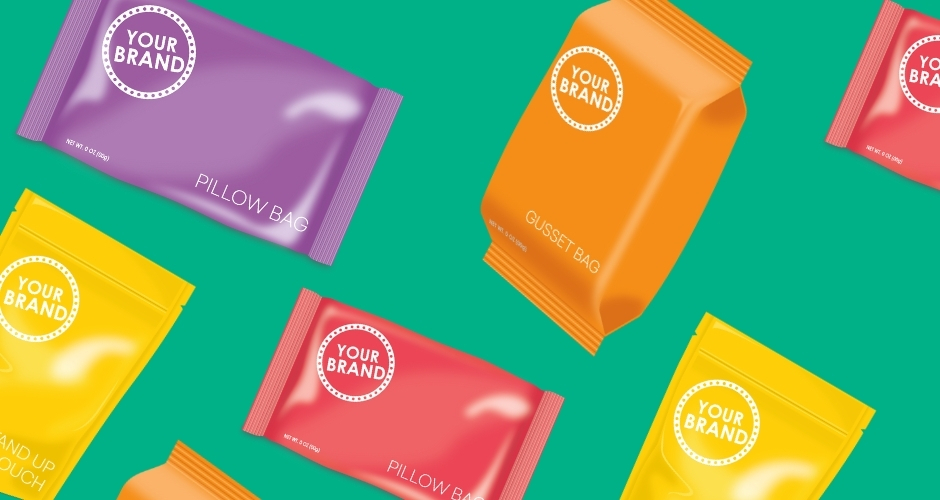Recycle-Ready Film: What You Need to Know for Packaging

Sustainable packaging has evolved from a trend to a growing expectation—driven not just by consumers and brands, but increasingly by retailers. Major players like Walmart and Costco are leading the charge, urging suppliers to adopt more eco-conscious packaging solutions.
As sustainability becomes a core purchasing driver, the demand for packaging solutions like recycle-ready flexible films continues to rise.
But what exactly makes a film "recycle-ready"? First, it’s important to understand the rationale behind using plastic film in the first place.

Recycle-ready films are typically monomaterial. These simplified structures are valuable to end markets as raw material .
The Case for Flexible Films in Packaging
Whether it’s public health and food safety, efficiency, transportability – when plastic is used, there’s usually a reason for it.
Before we’re able to remove plastic from the supply chain entirely, we need to rethink how it is being used, and do it more mindfully.
There’s good reason many CPGs leverage flexible films in product packaging:
- Material Efficiency: Flexibles use less material than rigid packaging, leading to less waste. High product-to-packaging ratio is a key benefit.
- Transport Benefits: Lightweight, flexible packaging takes up less space and weight in transit, reducing transportation emissions.
- Food Waste Reduction: Flexible packaging isn’t just about reducing the waste of materials; it’s about reducing food waste. High-barrier flexible substrates protect products by reducing exposure to air and contaminants helping to prevent spoilage. Consumers get frustrated to see produce wrapped in excess plastic (maybe rightfully so), but it does increase shelf life and reduce food waste.
Flexible film might not be a perfect choice–but it certainly has its benefits from a sustainability perspective. It uses less material, accomplishing the task at hand in a more energy efficient way.

What Is Recycle-Ready Film?
Traditional film structures consist of laminated layers that are near impossible to separate out in order to recycle at scale and require significant cost to process for a viable end use. In contrast, recycle-ready films are typically monomaterial (e.g., made entirely of polyethylene or PE).
These simplified structures are valuable to end markets as a raw material and therefore make economic sense to recover. However, they still require special handling on the consumer’s end to help maintain that economic value.
Recycle-ready flexible films need to be dropped off at stores that participate in dedicated recycling programs. Once collected, the material is sorted and bundled, which helps manage the cost typically associated with material separation at a recycling facility.
This step also requires additional consumer education; recycle-ready films must go hand-in-hand with a How2Recycle Certification label, which helps to ensure that these bundles aren’t contaminated with non-compatible packaging.
The How2Recycle Label Certification Process
The “How2Recycle” label is a crucial part of educating consumers about how to dispose of packaging. To display this label, companies need to have membership with How2Recycle, and have their materials tested and validated for recyclability.
Though membership and certification requires an investment, it positions brands as environmental leaders and meets growing consumer demand for sustainability. We work with a network of sustainable suppliers with substrates pre-approved by How2Recycle, which can help to make the process a bit easier.

Timeline and Costs for Recycle-Ready Trials
The process of transitioning to recycle-ready packaging can take up to 14 weeks, depending on the availability of materials and trial outcomes. Our network of suppliers are willing and eager to support the trialing process and often offer to share the R&D expense in the pursuit of implementing more sustainable packaging solutions.
Implementing Recycle-Ready Films: Key Considerations
The behavior of monomaterial film can vary when used on high-speed equipment and requires full-scale trials to ensure new materials perform as expected. Some considerations include:
- Visual Impact: Colors and artwork may appear less vibrant on recycle-ready substrates compared to traditional films. Our experience at creative werks is that brands are willing to accept these trade-off for the sustainability benefits.
- Seal Performance: The sealing properties of recycle-ready films can differ from traditional films, presenting a few challenges. Think zipper failures, or inconsistent seals. We leverage our knowledge from extensive trials to make recommendations like the use of zippers based on their impact on sealability, and adjustments to temperatures for seal quality.
- Future-forward investments: Trials and certifications, such as the “How2Recycle” label, can impact the cost and lead times for adoption.
The Future of Recycle-Ready Films
As regulatory advancements like Extended Producer Responsibility (EPR) work to incentivize adoption, and technological advancements make it easier to recycle these materials, we can expect to see further developments in this space. Engaging your packaging partner early in the development process will ensure that you get the best results possible.
With Walmart and other major retailers setting strict packaging requirements, now is the time to explore recycle-ready options. The earlier you start, the smoother the transition will be.
Learn more about creative werks’ commitment to responsible practices in our 2025 Responsibility Report: People, Planet, & Prosperity.
Interested in trialing or transitioning your packaging to sustainable materials? Reach out today to speak with our R&D experts.